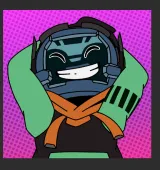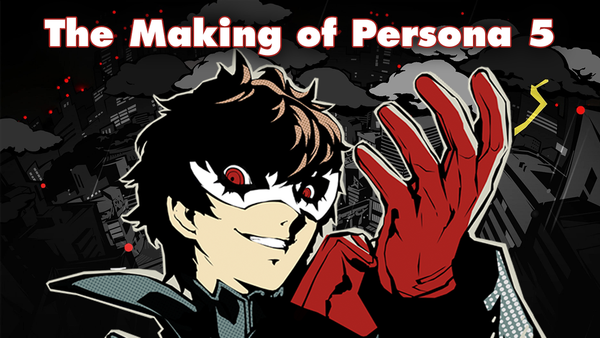South of Midnight: A Cult Classic (Review)

Overview
In the wild world of video games we're constantly being bombarded with new games fighting for our time, engagement and valuable dollars, the latter being ever more front of mind with the recent cost of a video game discourse surrounding the worth of a video game.
With the ever-expanding lists of games that are releasing this year, coupled with the different real world issues that are effecting peoples capacity to play games, what games we invest our time and hard earned dollars into is a big subject on peoples minds. Now what does this have to do with South of Midnight.
South of Midnight is 70 dollars Australian and around the 40 dollar mark in USD. It's an action platformer that will run you around 10 hours to complete, and is in my view one of the most beautiful looking games of the year so far, with an exceptional soundtrack to match. It tells a collection of self-confined intimate storis which neatly couple as a throughline to the overarching journey that Hazel embarks on.
But on the flipside is a combat system that feels like it has a steady set of tools, but an awkward and stiff form of movement that doesn't feel satisfying, and only really does become serviceable later on in the experience when you unlock new abilities, along with platforming that also suffers from similar movement issues and some inconsistent platforming.
Overall I felt, like I really liked South of Midnight, but more for what it offered as a narrative lead experience, and its artistic merits more than what it offers as a video game, which can feel by the numbers in many respects. There is absolutely an audience that will love this game, and I do believe overall South of Midnight is a good experience, and the question that I aim to answer with this review is if that 40 dollar price point is worth it for you and through the lens of Game Pass if South of Midnight is worth your time. So without delay, let's dive into my review for South of Midnight.
Story
South of Midnight is set in the deep American South and follows Hazel, a young girl who, while preparing to leave with her mother one night, is caught in a supernatural drift and violent storm. The chaos separates Hazel from her mother, prompting her to embark on a journey to reunite with and ultimately save her. Along the way, Hazel discovers she is a "Weaver"—someone gifted with the ability to heal emotional and spiritual wounds and restore fractured bonds between spirits.
Through Hazel’s role as a Weaver, the game explores powerful themes of grief, loss, and the process of letting go, told through a series of touching, self-contained stories she encounters. These moments are often emotionally resonant and serve as narrative threads that bind the larger story together. A standout aspect of South of Midnight is its deep integration of Southern folklore, which informs many of the characters, stories, and creatures Hazel meets. This rich cultural backdrop provides a distinct and refreshing mythos not often explored in games, helping to create a world that feels both unique and deeply rooted in its setting.
Gameplay
Combat
The combat in South of Midnight is built around third-person action, but it comes across as stiff and somewhat clunky. Hazel's movement feels sluggish, which creates a noticeable disconnect that undermines what should be a more engaging system. While the game offers a decent variety of tools and enemy types, the core issue lies in how Hazel handles—combat simply doesn’t feel satisfying or responsive.
This awkwardness may stem from a clash between gameplay mechanics and the game’s artistic direction, particularly its use of stop-motion-inspired animation. While this visual style is unique, it may unintentionally impact the feel of gameplay. Even putting that aside, the combat doesn’t do much to stand out. The design is familiar, relying on trends like enemies with unblockable attacks, and overall, it lacks the freshness or innovation needed to leave a lasting impression.
It’s not broken or outright bad—but it’s also not memorable, and ultimately, it’s the least compelling part of the experience.
Level Design
South of Midnight features beautifully crafted environments, with each level showcasing a distinct and visually rich atmosphere. While the level design itself isn’t revolutionary, the game’s strong stylistic choices elevate the experience, making traversal feel engaging and immersive.
Structurally, the levels follow a consistent approach: players use the same tools featured in combat to solve light environmental puzzles and navigate platforming sections. While these mechanics aren’t particularly innovative, they’re implemented effectively and complement the game’s worldbuilding. The design leans toward linearity, but this works in the game’s favor—helping maintain narrative focus and pacing without feeling restrictive.
In the end, the level design stands out more for its presentation and tone than for mechanical depth, but it serves the overall experience well.
Platforming
The platforming in South of Midnight carries over many of the same issues found in the combat, though to a slightly lesser degree. Movement often feels stiff and imprecise, with inconsistent interactions when jumping between ledges or platforms—sometimes causing Hazel to overreach or fall short unexpectedly.
At the core of the issue is Hazel’s sluggish and delayed responsiveness, which dulls the impact of what are otherwise thoughtfully designed platforming sequences. While the layouts and intent behind these segments are solid, the unrefined controls make them feel less enjoyable and strip away some of their potential charm.
Visuals, Sound and Performance
Visual
The visuals in South of Midnight are truly outstanding, with an art direction that stands out as one of the game's defining strengths. The painted, stylized environments are rich with personality and detail, and the use of stop-motion-inspired animation brings a unique texture to the experience. The game blends exaggerated visual elements with grounded realism, creating a version of the deep South that feels both fantastical and culturally resonant.
Even with some flaws, it's impossible not to admire the artistry on display. The world feels alive with small, thoughtful details, and the visual storytelling carries a strong sense of magical surrealism infused with Southern folklore. This distinctive aesthetic not only sets South of Midnight apart from other titles but also makes it a strong contender for art direction awards. With its variety of striking locations and imaginative presentation, the game's visuals are likely to be one of the most celebrated and memorable aspects of the entire experience.
Sound
The audio design in South of Midnight is equally impressive, playing a vital role in enhancing the game’s atmosphere and storytelling. The soundtrack features a rich blend of genres—ranging from the metallic twangs of folk and blues to emotionally charged, jazz-inspired compositions—that perfectly complement key narrative moments. Music is not just background here; it actively supports the emotional tone and cultural setting of the story.
Chris Fox, the game's Audio Director, described the soundscape as “a haunted juke joint at 3 a.m.—equal parts sorrow, swagger, and spellcraft,” and the game delivers exactly that. The sound design is immersive and deliberate, helping to further anchor the game’s mystical Southern identity and emotional core. It's a sonic experience that lingers, and one that elevates the game’s overall impact.
Performance
Performance-wise, South of Midnight generally runs well, but there are some noticeable issues that can affect the experience. During the early parts of the playthrough, occasional stuttering occurred—particularly during transitions into cutscenes or moments involving Hazel’s stop-motion-style animation. It was sometimes difficult to tell whether the hitching was intentional stylistic movement or actual performance drops.
Adjusting DLSS settings helped alleviate some of these issues, but intermittent stutters, especially during cutscene transitions, still persisted. While these hiccups are relatively minor in terms of their technical severity, their frequency early on was disruptive enough to momentarily pull attention away from the experience. It's something prospective players should be aware of when considering a purchase.
Conclusion
South of Midnight is a distinct and memorable experience—one that won’t appeal to everyone, but will strongly resonate with those who connect with its style, themes, and artistic approach. It’s a game that blends Southern folklore with striking visual design and heartfelt storytelling, all within a tight 10-hour runtime. While the full price may give some players pause, especially in today’s market, its inclusion on Game Pass makes it far more accessible and easy to recommend for those curious to see if it clicks.
For players subscribed to Game Pass—especially amidst the buzz around releases like Expedition 33 and Oblivion—this is a hidden gem worth taking a detour for. Beyond the subscription service, South of Midnight stands as a passionate, personality-driven platformer that harkens back to the charm of early 2000s games. It’s not without its flaws, but its creativity and heart make it an experience worth exploring, and one that may develop a cult following in the years to come.




